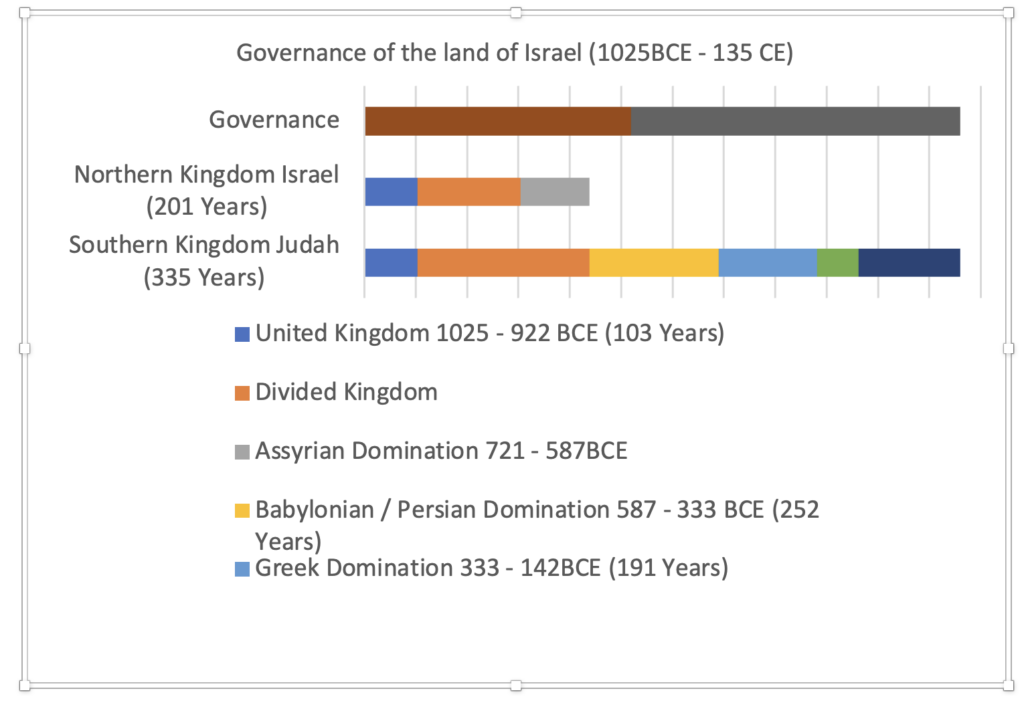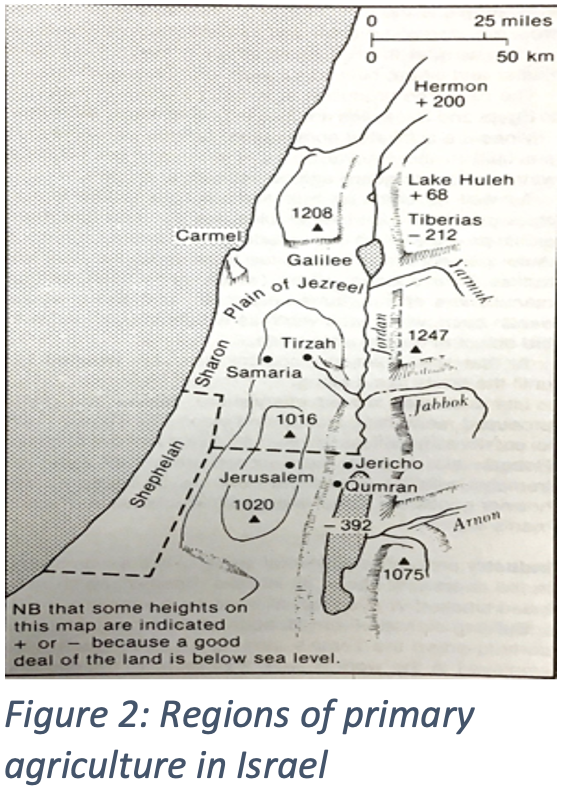The New Testament presents the acts, teachings, Passion and glorification of Jesus Christ as its central focus and the beginning activities of the Church[1] in 1st Century Israel and the Mediterranean[2]. Exploring these times reveals a world of complexity and diversity in the conditions experienced by individuals and communities. The land of Israel, Palestine, was under Roman military occupation, an outpost in the expanding Roman Empire since Pompey’s conquest in 63BCE[3]. The region “fell under the administration of the Imperial Province of Syria… governed by a military governor called a Legate”[4] with troops commonly stationed to keep peace and order.
The empire was undergoing consolidation, trying to unify its people after through centuries of conquest in a time known as “Pax Romana”, the Roman Peace[5]. The stability of a unified Mediterranean saw local administrators “continue as long as the Roman dominion was not threatened”[6], like Herod the Great and his sons in Palestine. Local customs were integrated and assimilated into the empire as an age of “globalisation where cultures and people…encountered each other in ways never witnessed before… a Greco-Roman veneer to all life…language, architecture, religion, trade, commerce and cultural identity were all influenced”[7].
The Jewish culture was no exception the Greco-Roman influence. “Jews from all walks of life adopted aspects of the Greco-Roman culture…promising a way to political influence and a better station”[8]. This did not overrun the Jewish way of life, adherence to the Torah was still prevalent, they were also “exempt from any obligations which conflicted with the demands of their faith”[9] including exemption from military service, observance of the sabbath, paying annual temple tax and not making sacrifices to the emperor[10].
Not all Jews were accepting of Roman rule, passive and active opposition including violence resulted in Palestine being a volatile region. In the previous one thousand years, the land of Israel had been occupied for over half of the time by successive empires[11], Assyrian, Babylonian, Persian, Greek, prior to the Romans contributing to an ever-increasing sense of powerlessness and alienation[12] contributing to Roman resentment. There was a common belief that God would send a Messiah to free Israel from their Roman oppressors[13], establishing God’s Kingdom that the Reign of God would “ensure…justice among the people…[especially] the poor, the oppressed, those who had no voice”[14]. Several messianic claimants calling for intervention against Roman rule resulted, leading to unrest in Jerusalem and the execution of leaders for treason against Rome, “preaching a kingdom that was not Rome threatened the prosperity and stability of the Roman Empire”[15].

Table 1: Ruling control of Israel 1025BCE – 135CE[16]
Judaism was the customary term describing the religious-cultural life of the Jews, the ethnic group who shared the ancestral heritage of the Israelites or Hebrews[17]. At its heart is an understanding of the covenant: the binding relationship initiated by God between God and his people (Israel) through God’s grace. Prosperity and success were promised to those who kept the covenant; being careful to do everything written in the law, keeping it on their lips, meditating on it day and night[18] and keeping it in their hearts[19]. “Most Jews maintained observance of commandments and Laws of the Torah, especially dietary laws, the observance of sacred days and festivals, and refusing to make graven images”[20]. However, a more legalistic view was the motivation, with Judaism losing sight that “membership of the people of God is dependent on God’s grace”[21] with the required obedience to the Law not earning salvation or gaining membership but was the “response to the gracious act of God making a covenant with the people of Israel”[22].
A diverse range of practices and beliefs developed in Judaism throughout the late Second Temple Period “not only between Palestinian and Diaspora Jews… but also between different groups: Pharisees, Sadducees, Essenes, and Zealots”[23]. While belief in the three great pillars of Judaism: the Jerusalem Temple, the land of Israel, and Mosaic Law was shared[24]they “promoted distinctive visions of the past, present, and future of God’s people”[25] due to their difference in understanding what it meant to follow God’s call to be a Holy people[26].

The land of Israel was of religious significance to the Jewish people. It was the land given to them by God as a physical sign of God’s covenant with them[27]. Throughout the Old Testament, the Promised Land is referred to as “flowing with milk and honey”[28], suggesting that it is rich and fertile land able to support a significant population. Located in “The Fertile Crescent”[29], the fertile plains of Jezreel, Sharon and Shephelah, the Jordan valley surrounding Jericho and the terraced farming techniques for stony soils in the hills of Galilee and Judea[30] present a contrary image to the modern arid, stony deserts pictures in Hollywood movies[31].

Additional to the primary industry of agriculture, several other industries were prosperous: fishing in the rivers and Sea of Galilee provided smoked and dried fish all the country[32] and Garum, a fermented fish oil popular throughout the empire [33]; building and construction works on the Temple, the cities of Tiberias, Sepphoris and Julias, and Pilate’s new aqueduct; craftsmen for everyday needs[34]. The vibrancy of the economy should have seen prosperity for many, “taxation and the unjust distribution of wealth”[35] kept most people in debit with wealth held by the sovereign court, Jerusalem priestly aristocracy, great merchants, chief tax collectors and great landowners.[36]
[1] Catechism of the Catholic Church, 2nd edition. (Libreria Editrice Vaticana, 1997), n124 (hereafter cited as CCC)
[2] Dennis Duling, The Jewish World of Jesus: An Overview. (Harcourt Brace Jovanich, 1982), 1.
[3] Etienne Charpentier, How to Read the New Testament. (SCM Press, 1999), 24.
[4] Duling, The Jewish World of Jesus, 4.
[5] Charpentier, How to Read the New Testament, 24.
[6] Francis Moloney, A Friendly Guide to The New Testament. (Garratt Publishing, 2010), 8.
[7] Maurice Ryan, Jesus & the Gospels, (Lumino Press, 2012), 26.
[8] Ryan, Jesus & the Gospels, 26.
[9] Jerome Murphy-O’Connor OP, Paul a Critical Life, (Oxford University Press Inc., 1996), 41.
[10] Duling, The Jewish World of Jesus, 4.
[11] The Catholic Youth Bible International Edition New Revised Standard Version Catholic Edition, (Saint Mary’s Press, 2019), 1548-1549. (Hereafter cited as CYB)
[12] Duling, The Jewish World of Jesus, 10.
[13] Rebecca Denova, Jesus Christ, World History Encyclopedia Website. Published on Jan 05, 2021, https://www.worldhistory.org/Jesus_Christ/
[14] Charpentier, How to Read the New Testament, 65.
[15] Denova, Jesus Christ, 2.
[16] CYB, 1548-1549.
[17] Duling, The Jewish World of Jesus, 1.
[18] Joshua 1:8 (NRSVCE)
[19] Psalm 40:8 (NRSVCE)
[20] Ryan, Jesus & the Gospel, 26
[21] David G Horrell, An Introduction to the Study of Paul, 2nd edition, (T&T Clark, 2006), 93.
[22] Horrell, An Introduction to the Study of Paul, 93.
[23] Horrell, An Introduction to the Study of Paul, 5.
[24] Daniel J Harrington SJ, Meeting St. Matthew Today: Understanding the Man, His Mission, and His Message, (Loyola Press, 2010), 6.
[25] Ryan, Jesus & the Gospel, 163.
[26] Horrell, An Introduction to the Study of Paul, 5.
[27] Albert Nolan, Jesus before Christianity, (Orbis, 1993)
[28] Exodus 33:3 (NRSVCE)
[29] National Geographic Education, The Fertile Crescent, (National Geographic Society, 2023). Retrieved from https://education.nationalgeographic.org/resource/fertile-crescent/#:~:text=fertile%20crescent%20illustration&text=Its%20area%20covers%20what%20are,runs%20through%20part%20of%20it.
[30] Charpentier, How to Read the New Testament, 26.
[31] Ryan, Jesus & the Gospels, 27.
[32] Charpentier, How to Read the New Testament, 26.
[33] Ryan, Jesus & the Gospels, 35.
[34] Charpentier, How to Read the New Testament, 26.
[35] Charpentier, How to Read the New Testament, 26.
[36] Charpentier, How to Read the New Testament, 26.


